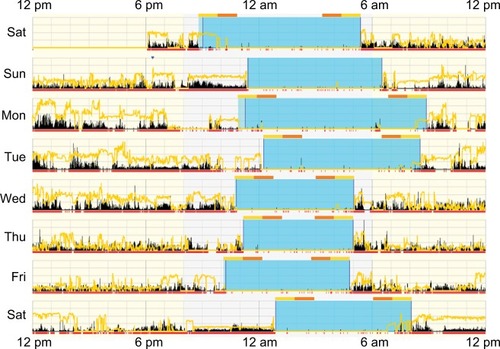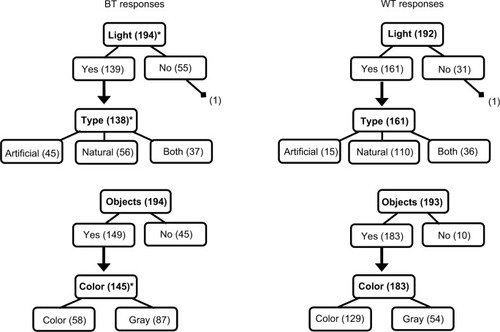Figures & data
Figure 1 Representation of photoreceptor thresholds, visual responses, and their relationship to the range of illumination from natural and artificial light sources.
Abbreviation: ipRGC, intrinsically photosensitive retinal ganglion cell.

Figure 2 Actigram from a participant working day shifts (7 am–7 pm).

Figure 3 Flowchart of response frequencies for the four light questions at BT and WT.
Abbreviations: BT, bedtime; WT, wake time; TALT, time above light threshold; TA10, TALT of lux.

Table 1 Reported light and photopic illumination (TA10)
Table 2 Reported light and objective sleep
Table 3 Reported light and subjective sleep
Table S1 Reported light and photopic illumination for day- and nightshift workers (TA10)
Table S2 Reported light and objective sleep (actigraphy) by shift type
Table S3 Reported light and subjective sleep (diary) by shift type
